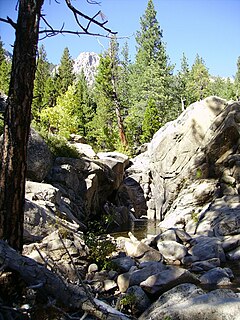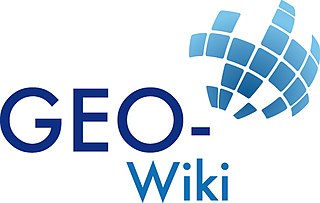
The National Geographic Society (NGS), headquartered in Washington, D.C., United States, is one of the largest non-profit scientific and educational organizations in the world. Founded in 1888, its interests include geography, archaeology, and natural science, the promotion of environmental and historical conservation, and the study of world culture and history. The National Geographic Society's logo is a yellow portrait frame—rectangular in shape—which appears on the margins surrounding the front covers of its magazines and as its television channel logo. Through National Geographic Partners, the Society operates the magazine, TV channels, a website, worldwide events, and other media operations.

The Royal Geographical Society (RGS) is one of the United Kingdom's learned societies and the professional body for geography worldwide, founded in 1830 for the advancement of geographical sciences. The Society has over 16,500 members, with its work reaching the public through publications, research groups and lectures.

Grover Hot Springs State Park is a state park of California, USA, containing natural hot springs on the eastern side of the Sierra Nevada. Park amenities include a swimming pool complex fed by the hot springs, as well as a campground, picnic area, and hiking trails. The 553-acre (224 ha) park was established in 1959.
Geovisualization or geovisualisation, also known as cartographic visualization, refers to a set of tools and techniques supporting the analysis of geospatial data through the use of interactive visualization.
Simple Features is a set of standards that specify a common storage and access model of geographic feature made of mostly two-dimensional geometries used by geographic information systems. Is is formalized by both the Open Geospatial Consortium (OGC) and the International Organization for Standardization (ISO).

GEO is a family of educational monthly magazines similar to the National Geographic magazine. It is known for its detailed reports and pictures.
Time geography or time-space geography is an evolving transdisciplinary perspective on spatial and temporal processes and events such as social interaction, ecological interaction, social and environmental change, and biographies of individuals. Time geography "is not a subject area per se", but rather an integrative ontological framework and visual language in which space and time are basic dimensions of analysis of dynamic processes. Time geography was originally developed by human geographers, but today it is applied in multiple fields related to transportation, regional planning, geography, anthropology, time-use research, ecology, environmental science, and public health. According to Swedish geographer Bo Lenntorp: "It is a basic approach, and every researcher can connect it to theoretical considerations in her or his own way."
Philosophy of geography is the subfield of philosophy which deals with epistemological, metaphysical, and axiological issues in geography, with geographic methodology in general, and with more broadly related issues such as the perception and representation of space and place.
Digital Earth is the name given to a concept by former US vice president Al Gore in 1998, describing a virtual representation of the Earth that is georeferenced and connected to the world's digital knowledge archives.

Nat Geo People is an international pay television channel owned by National Geographic Partners, a joint venture between The Walt Disney Company (73%) and the National Geographic Society (27%), with the operational management handled by the Fox Networks Group. Targeted at female audiences, with programming focusing on people and cultures, the channel is available in 50 countries in both linear and non-linear formats.

The International Cartographic Association (ICA), is an organization formed of national member organizations, to provide a forum for issues and techniques in cartography and geographic information science (GIScience). ICA was founded on June 9, 1959, in Bern, Switzerland. The first General Assembly was held in Paris in 1961. The mission of the International Cartographic Association is to promote the disciplines and professions of cartography and GIScience in an international context. To achieve these aims, the ICA works with national and international governmental and commercial bodies, and with other international scientific societies.
A spatial data infrastructure (SDI) is a data infrastructure implementing a framework of geographic data, metadata, users and tools that are interactively connected in order to use spatial data in an efficient and flexible way. Another definition is "the technology, policies, standards, human resources, and related activities necessary to acquire, process, distribute, use, maintain, and preserve spatial data".
Geographic information retrieval (GIR) or geographical information retrieval systems are search tools for searching the Web, enterprise documents, and mobile local search that combine traditional text-based queries with location querying, such as a map or placenames. Like traditional information retrieval systems, GIR systems index text and information from structured and unstructured documents, and also augment those indices with geographic information. The development and engineering of GIR systems aims to build systems that can reliably answer queries that include a geographic dimension, such as "What wars were fought in Greece?" or "restaurants in Beirut". Semantic similarity and word-sense disambiguation are important components of GIR. To identify place names, GIR systems often rely on natural language processing or other metadata to associate text documents with locations. Such georeferencing, geotagging, and geoparsing tools often need databases of location names, known as gazetteers.
Volunteered geographic information (VGI) is the harnessing of tools to create, assemble, and disseminate geographic data provided voluntarily by individuals. VGI is a special case of the larger phenomenon known as user-generated content, and allows people to have a more active role in activities such as urban planning and mapping.

Matthias Kuhle was a German geographer and professor at the University of Göttingen. He edited the book series Geography International published by Shaker Verlag.

Geo-Wiki is a platform for engaging citizens and experts in both biophysical and socioeconomic monitoring, established in 2009 at the International Institute for Applied Systems Analysis (IIASA). It aids in both, the validation of existing geographical information and the collection of new geographical information through crowdsourcing and citizen science. Using tools such as Google satellite imagery, Bing Maps, Geotagged photographs and the Internet, individual volunteers are able to contribute valuable in-situ data on land cover and land use, either by validating existing data in comparing it with satellite imagery, or by collecting new. Except on the conventional way, other method for crowd-sourced data collection in Geo-Wiki is through campaigns and games, used as incentives to motivate citizens. Collected data in the platform is freely available.
Geodesign is a set of concepts and methods used to involve all stakeholders and various professions in collaboratively designing and realizing the optimal solution for spatial challenges in the built and natural environments, utilizing all available techniques and data in an integrated process. Originally, geodesign was mainly applied during the design and planning phase. "Geodesign is a design and planning method which tightly couples the creation of design proposals with impact simulations informed by geographic contexts." Now, it is also used during realization and maintenance phases and to facilitate re-use of for example buildings or industrial areas. Geodesign includes project conceptualization, analysis, design specification, stakeholder participation and collaboration, design creation, simulation, and evaluation.

Environmental Earth Sciences is an international multidisciplinary scientific journal published 24 times a year by Springer. Its self-stated focus is on "all aspects of interaction between humans, natural resources, ecosystems, special climates or unique geographic zones, and the earth". Its subject areas include water and soil contamination caused by waste management; environmental problems associated with transportation by land, air, and water; and geological processes that may impact biosystems or humans.
Arctic is a quarterly, peer-reviewed, multidisciplinary, scientific journal, published by the Arctic Institute of North America. The focus of Arctic is original research articles on all topics about or related to the northern polar and sub-polar regions of the world. Additional published formats are book reviews, profiles of notable persons, specific geographic locations, notable northern events, commentaries, letters to the editor, and a general interest section consisting of essays and institute news. Mutltidisciplinary coverage encompasses physical sciences, social sciences, biological sciences, humanities, engineering, and technology. The journal was first published in spring of 1948.
Gender, Place & Culture: A Journal of Feminist Geography is a peer-reviewed journal published 12 times a year by Taylor & Francis to provide "a forum for debate in human geography and related disciplines on theoretically-informed research concerned with gender issues."








